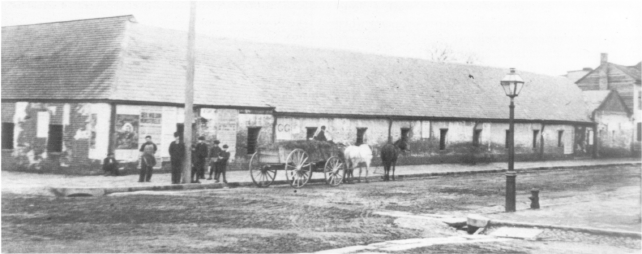

The large pavilion-style hospitals constructed during the war comprised a hundred or more independent wooden barracks that were well ventilated and could be easily isolated in case of disease outbreak or fire. They often risked death by tending to patients with contagious diseases. The only organized, experienced, and available nurses in the country, they nursed the wounded organized housekeeping, cooking, and distributing food and providing laundry services. More than six hundred Catholic sisters served during the Civil War and a hundred of these were Sisters of Mercy. The Sisters of Mercy compassionately cared for the sick at Douglas and prepared the dying for eternity. Sister Mary Collette O’Connor on the front steps of Douglas Hospital with military and staff Unfortunately her health was weakened by the grueling work, and Sister Mary Colette died July 16, 1864. She possessed remarkable executive abilities and a tender heart. Former superior at the Infirmary, Sister Mary Colette O’Connor served as superintendent. The War Department asked the sisters to take charge of Douglas Hospital on December 23, 1861. These dwellings the Douglas General Hospital.

Breckinridge of Kentucky and Senator Henry Rice of Minnesota Douglas of Illinois, Vice President John C. When it burned down later that year, the government seized the private mansions of Senator Stephen A. When the Civil War began in 1861, they offered the Infirmary to the government. Sisters of Mercy took over operation of Washington Infirmary in 1855. The rattle of the anguish-laden ambulance, the piercing cries of the sufferers … made morning, noon and night too dreadful to be borne. The endless roll of the army wagon seemed never still. Churches, art-halls and private mansions were filled with the wounded and dying of the American armies. Shed hospitals covered acres on acres in every suburb. Soldiers were entrenched at every gate-way. Mary Clemmer Ames, a Washington resident during the Civil War, wrote:Īrid hill, and sodden plain showed alike the horrid trail of war. Steamboats with names like Lizzie Baker, Connecticut, and General Hooker, their whistles blaring in harsh ghostly tones, landed at the Sixth Street wharves in downtown Washinngton, where long lines of horsedrawn ambulances waited to take the wounded to Washington’s twenty-one overcrowded hospitals.” Washington was often inundated with casualties from the Army of the Potomac. They were based on the British design first used in the Crimean War and emphasized ample ventilation. These state-of-the-art hospitals featured separate wards, or pavilions, radiating from a central corridor. As a result, Armory Square, Mount Pleasant, and Judiciary Square hospitals were completed 1862. Sanitary Commission urged the government to build pavilion-style hospitals, instead of renting buildings ill-adapted for hospitals. It was the last of Washington’s Civil War hospitals to close.īetween 1861-1862, the U.S. In December 1864, the hospital had 2,080 beds. At one point, 312 hospital tents were in use on the site, with a capacity of 1,872 beds.

To these were added hospital tents with six beds each. A few existing buildings – wooden barracks and a brick farm house – were incorporated into the hospital, which consisted of nine wards, with 63 beds each, for a total of 945 beds. Harewood consisted of frame buildings and tents, some without heat or ventilation.


 0 kommentar(er)
0 kommentar(er)
